
Spring in Spokane brings chilly mornings and mild afternoons — and several lawn care tasks like applying fertilizer, mowing the grass, and removing excess thatch.
The only question is whether you want to do these lawn care tasks yourself or would rather hire a local lawn care crew.
Whatever you decide, doing these things for your Spokane lawn will keep your grass healthy and vibrant all season long.
1. Fertilize Your Lawn
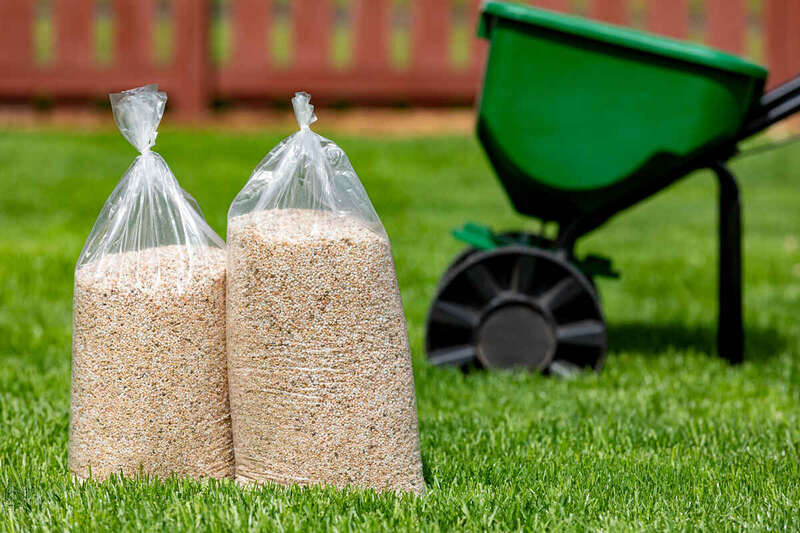
An application of nitrogen-only fertilizer should be made around Memorial Day to allow your cool-season grasses to stay green throughout summer. Apply 1 to 1.5 pounds per 1,000 square feet at this time, and make sure it is evenly spread out.
Avoid complete fertilizers containing phosphorus and potassium as much as possible, as the soils in eastern Washington are usually well-balanced, but have your soil tested at least once a year to ensure each macronutrient is at its correct levels.
Note: More fertilizer is required in eastern Washington during late summer and fall than in spring.
See Related:
— How to Fertilize Your Lawn
— Reasons Why Soil Testing is Important for the Lawn
2. Water Your Grass With Care
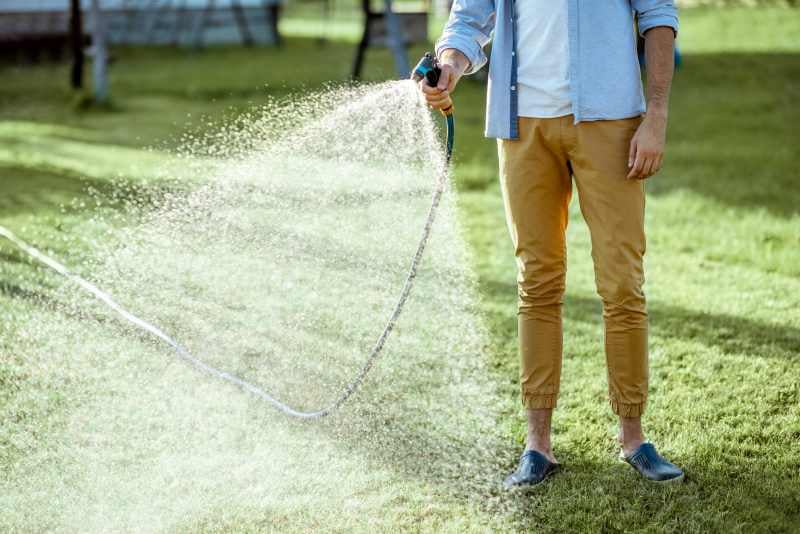
During the spring, most cool-season grasses begin to speed up their growth rates rather quickly. During this time, proper watering is key to ensure your lawn doesn’t develop any brown or wilted patches.
Follow these tips:
- Water your lawn early, before sunrise.
- Ensure the water reaches deep into the soil, allowing the growth of deeper roots.
- Water only if the soil is dry to avoid the development of grass diseases.
- Aim to water 0.5 to 0.75 inches per week.
See Related:
— Best Time to Water Your Grass
— Signs Your Lawn Needs Watering
— How Often Should I Water My Lawn
3. Mow Your Lawn
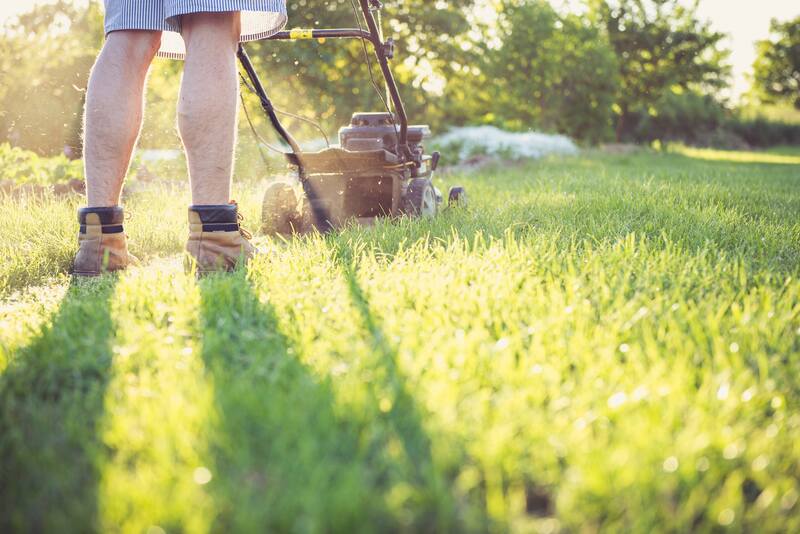
When mowing your grass in spring and all through the growing season never cut off more than one-third of your grass height at a time. Here’s why: If you cut your lawn too low, your grass will require higher amounts of watering, more fertilizer, and more maintenance in general.
By cutting only one-third of your grass height, you can mulch your grass clippings and leave them on the lawn as long as they do not form clumps. Your grass clipping then will naturally fertilize your lawn.
Before your first mow of the season, get your equipment ready. Get your lawn mower blades sharpened. Dull blades can damage — or bruise — grass blades, making them more susceptible to lawn diseases and lawn pests.
See Related:
— Lawn Mowing Tips: How to Mow a Lawn the Right Way
— When to Mow Your Yard This Spring
— How to Sharpen Lawn Mower Blades
4. Identify and Treat Lawn Diseases
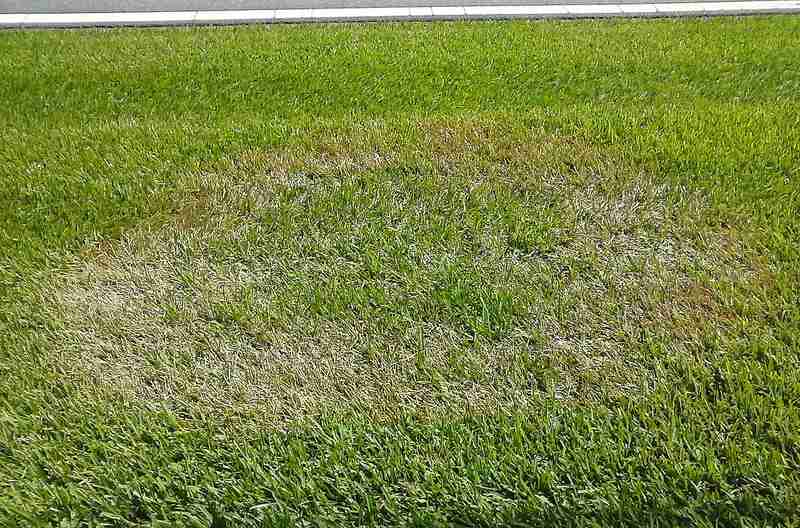
Photo Credit: Scot Nelson / Wikimedia Commons / CC0 1.0
Grass disease symptoms often show up in late spring. When inspecting your lawn, pay close attention for signs of these lawn diseases:
- Brown patch: Look for small, round, tan-colored spots on your lawn, with a green center. Sometimes, you may spot the presence of white mycelium in the early morning. This disease grows best in cool and moist soils.
- Necrotic ring spot: This disease shows itself through straw-colored rings and arches on your grasses that can reach several feet in diameter. There’s also black rot on the grass roots and lower stems.
To avoid turfgrass diseases such as these, make sure you are not over-watering or over-fertilizing your lawn because these diseases grow vigorously in moist, cool conditions.
And if you do suspect your lawn is battling a disease, look for fungicides in any Spokane lawn and garden center that can take care of the symptoms before they spread to the rest of your lawn.
See Related:
— Best Lawn Fungicides
— Signs of Overwatering Your Lawn
— How to Fix an Over-Fertilized Lawn
5. Remove Excess Thatch
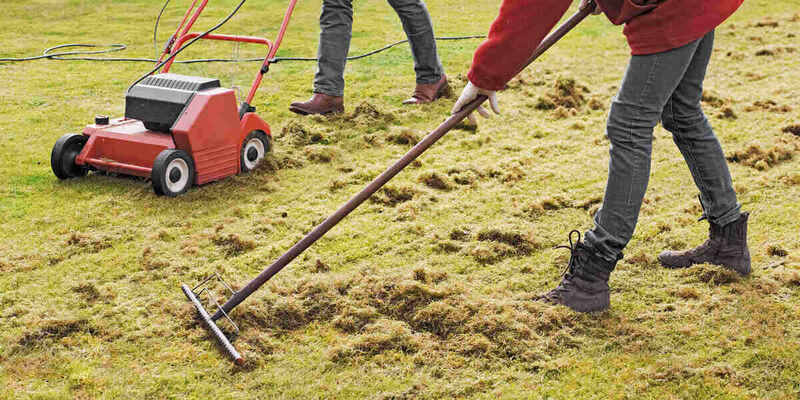
Thatch can be beneficial to lawns in small quantities and bolster your grass to resist regular foot traffic. However, a thick layer of thatch can become home to many lawn diseases and lawn pests.
In early spring, when the last frost has ended, use a dethatching rake to dig up excess thatch and remove the clippings left behind to allow for your lawn to fill in and grow denser.
See Related:
— When and How to Dethatch Your Lawn
— Top 10 Benefits of Dethatching the Lawn
— How Much Does Lawn Dethatching Cost?
Spring Lawn Care Leads to Green, Healthy Grass
Spring is the ideal time to give your Spokane lawn the care it needs to thrive throughout the year. By following these tips, you can ensure your yard stays healthy, lush, and ready for the warmer months ahead.
Need help preparing your lawn? Visit our Spokane lawn care page to hire a local LawnStarter lawn care crew. In addition to Spokane, we provide lawn mowing, trimming, and lots of other outdoor services to other Washington cities, including Seattle.
Read More:
— Washington Native Plants
— Most Common Weeds in Washington State
— Best Grass Seed for Washington State
Main Image Credit: Jon Roanhaus / Wikimedia Commons / CC BY-SA 4.0